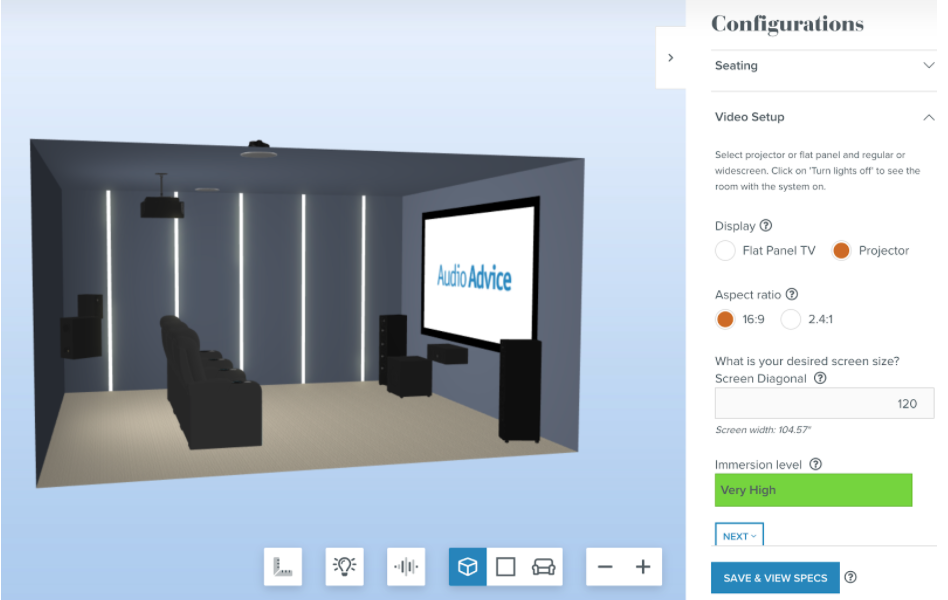North Carolina-based retailer Audio Advice has developed a free interactive 3D design tool for modelling an “acoustically correct” home theater system, known as Home Theater Designer. The tool, which uses algebraic algorithms, sets out to optimize both the viewing and listening environment in the home and adopts modelling to include speakers, displays and seating. The tool also enables users to set their room dimensions and then answer key questions to create a three-dimensional rendering of their room in real-time and “at a fraction of the time and cost of the traditional planning experience.”

The Audio Advice Home Theater Designer can be used for any AV environment, whether a dedicated home theater, living room, family media room or man cave. The designer asks the user to enter room dimensions and then answers questions regarding number of seats, whether a TV or PJ is used, the desired screen size, number of speakers etc.
If you change your setup during the process, the program will adjust to give guidance as to whether the changes will work. A user can also opt to see the system from the viewpoint of their seating position to visualize and simulate real life. A finished report with exact speaker locations, screen size and dimensions is prepared for the user.
“People need resources when it comes to designing their entertainment set ups. The popularity of DIY home design software gives everyday people the power to take on projects on their own. The magic of this tool is that if you feel good with your report, you can take on your install; if you need additional help, our service team can guide you through deeper solutions; or if you want to hand it off for full installation, we can do that too,” said Audio Advice CEO Scott Newnam. “In a year that is falling short on gifts, this is our gift to anyone who wants to explore a better at-home entertainment experience.”
The Audio Advice Home Theater Designer tool is live today and free to use.
Martin, a seasoned journalist and AV expert, has written for several notable print magazines. He’s served in key roles at Lucasfilm’s THX Division, NEC’s digital cinema division, and has even consulted for DreamWorks. Despite his illustrious career, Martin remains rooted in his passion for cinema and acting, with notable appearances in several Spielberg films, Doctor Who, and Star Wars: The Empire Strikes Back. He currently resides in San Francisco.
Post Disclaimer
Some of our content may contain marketing links, which means we will receive a commission for purchases made via those links. In our editorial content, these affiliate links appear automatically, and our editorial teams are not influenced by our affiliate partnerships. We work with several providers (currently Skimlinks and Amazon) to manage our affiliate relationships. You can find out more about their services by visiting their sites.






Similar threads